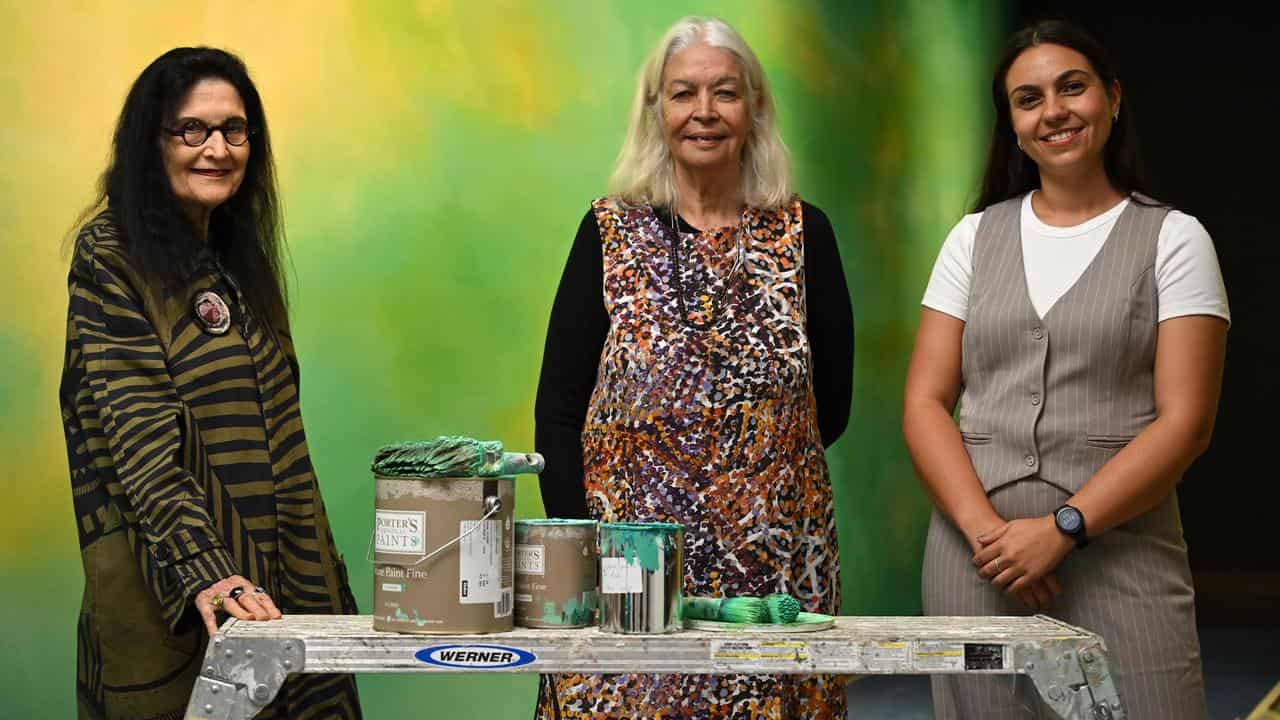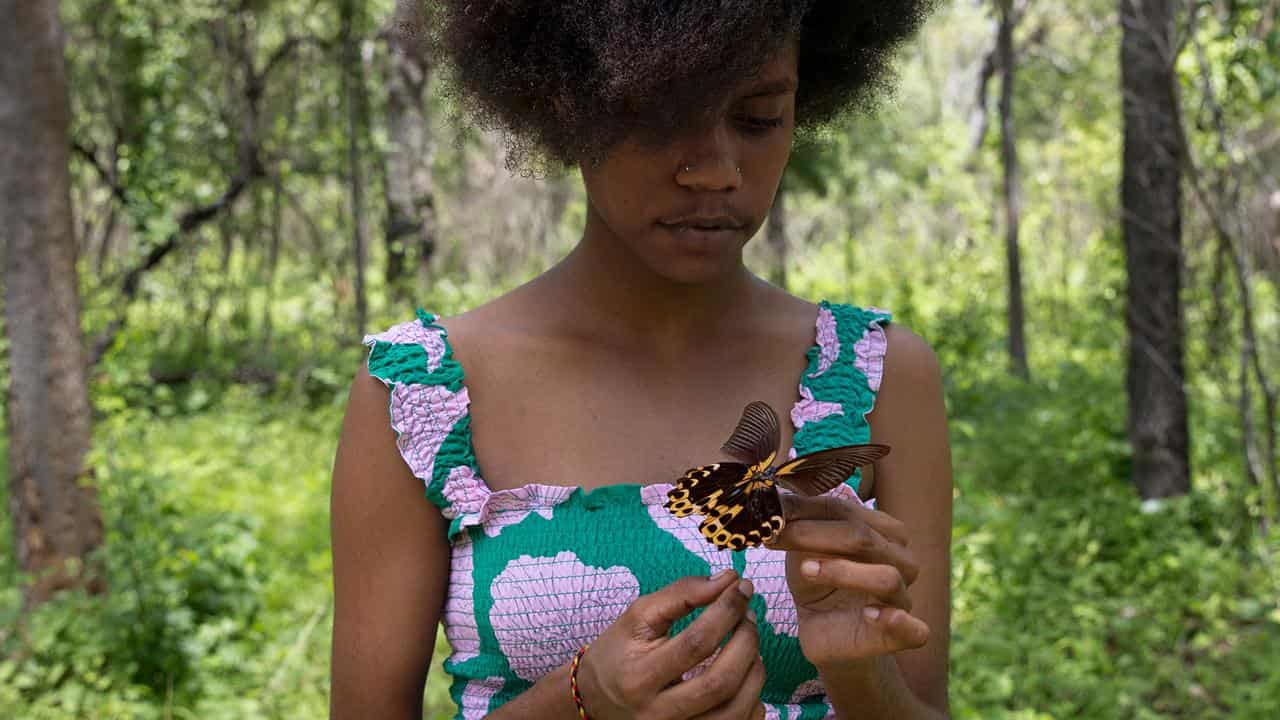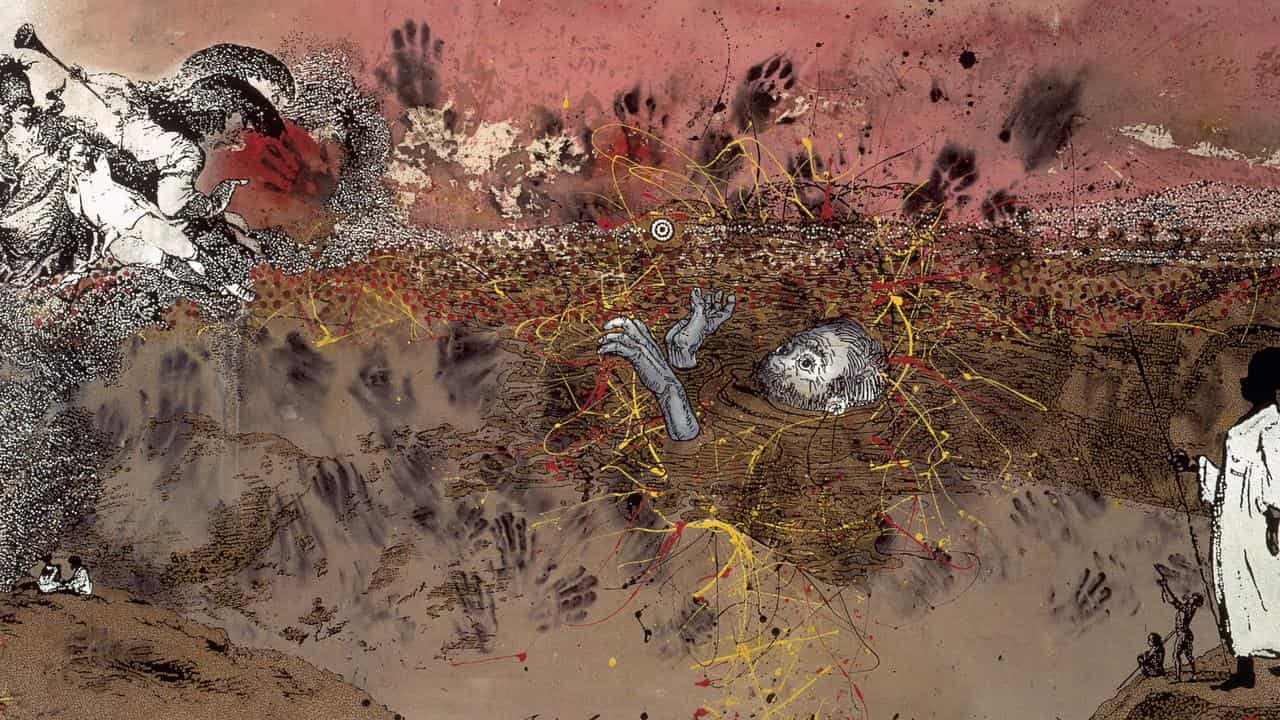
The new entrance to Melbourne University's Potter Museum of Art is framed by a giant mirror - fitting for an institution taking a good hard look at itself, and its past.
The exhibition 65,000 Years: A Short History of Australian Art, will mark the gallery's reopening in May after it closed in 2019 for a renovation project that took six years.
Co-curated by Marcia Langton, Judith Ryan and Shanysa McConville, the exhibition title (shared with a companion Thames and Hudson publication released in 2024) is ironic.
The name refers to the belated and reluctant acceptance of Indigenous art into the fine art canon by curators, critics and collectors.
What's more, Professor Langton said at a sneak peek at the renovated museum on Wednesday, these artworks have often been wrongly interpreted as non-representational.
"I've been annoyed for decades about how Aboriginal works are treated as abstract works, as if they have no meaning, as if they are not histories," she said.

The 450 artworks in the show include pieces by William Barak, Lin Onus, Albert Namatjira, Rover Thomas and Emily Kam Kngwarray, with the majority on display drawn from the University's collections.
The exhibition and book both celebrate Aboriginal and Torres Strait Islander art, and contend directly with colonisation - such as the University's role in the eugenics movement, and its history of collecting Indigenous remains.
"While many of the artworks shine with the cultural richness of first peoples, there are also works that engage us in truth-telling and profoundly challenge the legacy of the University's collections and academic practices," said vice chancellor Emma Johnston.
Items from the archives include finance records approving the purchase of skeletal remains, medical instruments for measuring skulls and photographs of digs during which remains were stolen.
"Having all of that there, you can be critical of it and actually see how it was happening," said McConville.
The University collections date back to the 1800s, when Walter Baldwin Spencer was collecting work in western Arnhem Land in the Northern Territory.
Spencer was a professor of biology at Melbourne University and a prominent eugenicist - one of several from the movement of scientific racism who is still commemorated by the institution, with a building named after him.
Looking through the massive collections amassed by the likes of Spencer has been a 10-year project for Prof Langton, who was also one of the architects of the Voice to Parliament proposal, which failed at the 2023 referendum.

Not only did the collections reflect the racist views of those who built them, they also came with significant gaps, she said - there were no artworks by women collected apart from weavings, and the names of the artists who made those were never recorded.
It's here that loans, acquisitions and commissions have come into play, filling in the many blank spaces in the University's holdings.
Sandra Aitken's woven Gnarraban or eel trap is one of six major commissions revealed Wednesday, along with bull kelp water carriers and woven river reed and white iris baskets from artist Vicki West.
It's the first time the University's collections of Indigenous art, cultural objects and records has been shown together, and interpreted by authoritative Indigenous scholars, said the associate director of the University's art museums, Charlotte Day.
A gallery show would typically be hung on white walls, but the curators have designed backgrounds that reflect where the artworks are from - works from the likes of Trevor Nickolls on walls suggesting a city art studio and bark works from Arnhem Land on tropical greens.
"If you've been in the Arnhem bush after the rains, after the fires, there's an array of greens from psychedelic to forest green," Prof Langton said.
"I wanted to make the bark paintings feel like they're at home."
The Potter Museum of Art will reopen to the public during Reconciliation Week on May 30 and the exhibition run until November 23.




